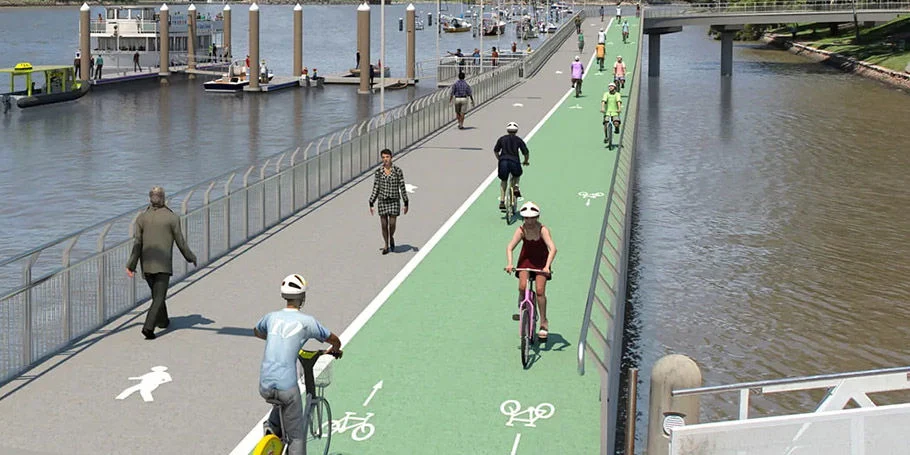Strengthening climate resilience in Asian cities
Urban Climate Change Resilience Trust Fund Technical Assistance Project

What we delivered
-
Supporting the knowledge management and resilience measurement of infrastructure for 17 cities across five priority developing member countries of the Asian Development Bank
-
City resilience measurement, planning and advisory, capacity building, knowledge management, stakeholder engagement, and programme management
Get in touch with our team
Asian cities find themselves at the forefront of vulnerability to climate change, grappling with increased frequency and intensity of natural hazards, necessitating urgent and comprehensive measures. The impact of climate change is notably disproportionate across these cities and the existing infrastructure is often ill-equipped to mitigate these impacts effectively. Compounded by rapid urbanisation across Asia, these challenges are exacerbated as increasing populations strain coping capacities of cities, rendering them susceptible to climate-induced disruptions.
To protect urban populations, build adaptive capacity and strengthen infrastructure against climate change impacts, the Asian Development Bank (ADB), with funding from the Rockefeller Foundation and the governments of Switzerland and the United Kingdom, set up the Urban Climate Change Resilience Trust Fund (UCCRTF). The USD $105 million multi-donor fund invests in climate-resilient infrastructure and improves urban planning that reduces the risk of climate events. It has supported 7.78 million people to better adapt to the effects of climate change.1 The fund provided technical assistance and investment grant financing to projects, and implemented a range of activities that generate and disseminate evidence and experience-based knowledge related to urban climate change resilience.
Our international development, planning and climate and sustainability services teams played a key role in supporting the knowledge management and resilience measurement of infrastructure for 17 cities across five priority developing member countries (DMCs) of the ADB including Bangladesh, Myanmar, Pakistan, the Philippines, and Vietnam.
Our work, delivered through the ADB Technical Assistance (TA) 9217 project, included city resilience measurement, planning and advisory, capacity building, knowledge management, stakeholder engagement, and programme management. We pioneered a new, more holistic method based on the City Resilience Index to assess climate resilience. This method measures resilience at a city and household level and is cost-effective and scalable.
Holistic approach to measuring resilience
Measuring resilience benefits is essential to make a case for investing in climate resilience, and to understand what measures are working well and where alternative approaches are needed. Drawing on the City Resilience Index, Arup and the project team used a multi-scale conceptual approach and pioneered a new method to assess climate resilience. This method evaluates the resilience impact of ADB UCCRTF-supported projects through holistic measurement of the change in resilience in the DMCs, and measuring ‘reduced loss’ related to those investments.
Our resilience measurement specifies the unit of resilience and considers the capacities and changes of the unit over time (baseline and endline). It also accounts for the complex nature of the UCCRTF programme, which influences resilience at different levels. Measuring resilience at a city and household level, the method assesses the impacts of the investments on the system and the people. The method is also cost-effective and scalable since it uses a random sample of households in the project areas.
The city resilience measurement and the results of the Baseline and Endline Study provided one of many input into understanding the impact of UCCRTF in the selected cities at the end of the programme. City governments welcomed the survey and data results to gain insights into the overall picture of resilience of the city. In the case of Faridpur Municipality, Bangladesh, the mayor recognised the need to undertake a comprehensive urban plan, integrating climate change to inform the infrastructure, social, and environmental aspects of city planning which were previously planned in a siloed manner.
Satoshi Ishii
Strategy and Partnerships Team, Water and Urban Development Sector Office, Sectors Group, ADB
Building capacities through knowledge sharing
A key component of the fund is focused on knowledge management and sharing to enhance the capacities of ADB staff and city stakeholders. Through a learning-based approach to monitoring and evaluation, projects became generators of knowledge of urban resilience.
We facilitated capacity building through workshops and knowledge sharing activities, enabling stakeholders to integrate city resilience into their projects. These included ADB staff training on counting climate finance, events around COP26, and brown-bag webinars. We also developed toolkits and practitioner guides on key resilience concepts that helped embed resilience principles across ADB programming. These included thematic papers on critical topics such as Nature-based solutions, urban health and healthy cities, and geospatial tools focusing on the Spatial Data Analysis Explorer (SPADE). Notably, we also created city resilience profiles (CRP) outlining the practical application of climate change resilience on ADB investments of the cities identified.
The knowledge products created were influential in generating demand for resilience across the ADB and the cities. By creating and disseminating knowledge products that catered to the diverse learning needs of these stakeholders, the project helped to enhance the awareness and application of climate resilience in urban settings. The knowledge and insights generated through the project will contribute to informed decision-making and the implementation of climate-resilient infrastructure in Asian cities.
1Out of these, 2.43 million people are projected as direct beneficiaries, and 5.34 million people are indirect beneficiaries. Direct beneficiaries are defined as both targeted beneficiaries and receiving high intensity of support, whereby targeted means they can be identified as receiving direct support; can be counted individually; and are aware that they are receiving support in some form. Indirect beneficiaries are defined as either: (i) targeted and receives medium or low intensity of support; or (ii) not targeted and receives high or medium intensity of support. Reference: UK Government. “Number of people supported to better adapt to the effects of climate change as a result of International Climate Finance: ICF KPI 1 Methodology Note.” February 2023.
Daira / Oxford Consulting Partners / Willis Towers Watson / Plan International / Koworkers
Projects
Explore more cities projects

Supporting Birmingham as bold 2022 Commonwealth Games hosts
Birmingham 2022, United Kingdom

Major redevelopment transformed with integrated transport and sustainable design
Cardiff Central Square

Auckland’s first urban heat assessment guides climate adaptation planning
Auckland Urban Heat Assessment, New Zealand

Developing a master plan for regional regeneration in Victoria
Victorian Goldfields World Heritage Master Plan, Australia
Get in touch with us
If you'd like to speak to one of our cities experts about any of the issues raised on this page, or a potential collaboration, then please get in touch.

